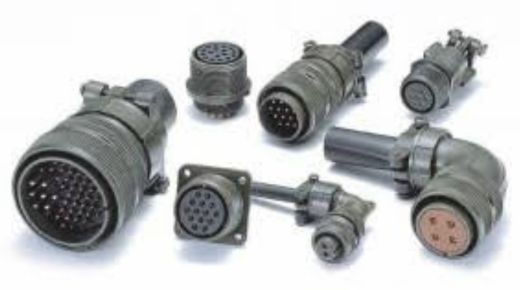Many people turn to complex tools, apps, and spreadsheets to keep their finances in check, but one often-overlooked tool can be right under your nose: check stubs. Also known as pay stubs, these documents provide a detailed breakdown of your earnings, deductions, and other financial data that can significantly improve your money management strategies.
In this article, we’ll explore how check stubs can help you manage your finances more effectively, offering tips and insights into how to maximize their benefits.
Understanding the Components of a Check Stub
Before diving into how check stubs can aid your financial management, it’s essential to understand their core components.
Typically, a check stub includes the following details:
- Gross Pay: This is the total amount you earned before any deductions. It’s important to track your gross pay as it reflects your income potential and gives you a baseline for evaluating raises, bonuses, or additional income streams.
- Net Pay: Also known as “take-home pay,” this is what remains after deductions such as taxes, insurance, and retirement contributions. Monitoring your net pay helps you plan your monthly budget and manage discretionary spending.
- Deductions: These include federal and state taxes, social security contributions, retirement savings, health insurance premiums, and other benefits. Being aware of your deductions allows you to see where your money is going and helps you optimize your tax strategy.
- Hours Worked and Pay Rate: If you’re paid hourly, check stubs show how many hours you worked, along with your hourly rate. This can help ensure that you’re being paid correctly, particularly if you’re working overtime or taking on additional projects.
- Year-to-Date Totals: Most check stubs provide a year-to-date (YTD) summary, which includes the total amount you’ve earned and the deductions taken so far for the year. This is particularly helpful for tracking your financial progress over time.
Understanding these elements can provide insight into your overall financial health, helping you identify where you can make improvements or adjust your financial strategies.
Budgeting Made Simple
A key benefit of regularly reviewing your check stubs is that they provide a clear picture of your income and expenses. Budgeting is one of the most effective tools for managing your finances, and your pay stub is the foundation of an accurate budget.
Start by looking at your net pay—this is the amount you can use for living expenses, savings, and discretionary spending. By knowing your precise take-home pay, you can create a budget that aligns with your financial goals, such as saving for a vacation, building an emergency fund, or investing for retirement.
For example, suppose your net pay is $3,000 per month, and your essential expenses (such as rent, utilities, and groceries) total $2,000. In that case, you’ll know that you have $1,000 left to allocate toward savings, investments, or discretionary spending.
You can also use your check stub to identify any unexpected changes in your income. If your net pay suddenly decreases, it could indicate an issue with your payroll or a shift in deductions that you may need to address.
Tax Preparation and Planning
One of the most stressful parts of financial management for many people is tax season. However, your check stubs can make tax preparation much easier. Each stub provides detailed information on the taxes you’ve already paid, which can help you estimate your tax liability or even determine whether you should adjust your withholdings.
Your pay stub shows deductions for:
- Federal and state income taxes
- Social Security contributions
- Medicare contributions
By keeping a record of your check stubs throughout the year, you’ll have a handy reference point when it’s time to file your tax returns. This also ensures that there are no surprises when you receive your W-2 form at the end of the year. If you find that too much or too little is being withheld from your paychecks, you can adjust your W-4 form to match your financial situation better.
Additionally, check stubs can help freelancers or independent contractors who are responsible for paying estimated taxes. By analyzing their earnings and tax deductions from regular employment, they can better estimate how much they’ll need to set aside for quarterly tax payments.
Tracking Your Retirement Contributions
One of the most significant financial goals for many people is preparing for retirement. Whether you’re contributing to a 401(k), 403(b), or another retirement plan, your check stub offers an easy way to monitor your retirement contributions. By regularly reviewing your stub, you can ensure that you’re contributing the desired amount to your retirement account and taking full advantage of any employer match programs.
Additionally, if your financial situation changes, such as receiving a raise or bonus, you can increase your retirement contributions accordingly. By adjusting these contributions over time, you can stay on track to meet your retirement goals, potentially lowering your taxable income in the process.
Preventing Payroll Errors
Payroll errors can be costly, but they’re also more common than many people realize. By carefully reviewing your check stubs each pay period, you can catch mistakes before they become major issues. Whether it’s an error in the number of hours worked, a miscalculation in overtime pay, or incorrect deductions, identifying these discrepancies early on ensures you’re paid what you deserve.
In addition, if you spot an error, you can address it with your employer or HR department promptly. Keeping track of your check stubs serves as proof of your earnings and deductions, which can be crucial if any disputes arise.
Monitoring Employee Benefits
Many people overlook the importance of the benefits they receive as part of their compensation package. Your check stub provides a detailed breakdown of any benefits, such as health insurance, dental coverage, life insurance, and retirement savings plans.
By reviewing this information, you can ensure you’re fully utilizing the benefits you’re entitled to. For example, if you’re contributing to a health savings account (HSA) or flexible spending account (FSA), your check stub will show the amounts being deducted. Understanding how much is being set aside can help you budget for medical expenses and maximize these tax-advantaged accounts.
Long-Term Financial Planning
Your check stubs can serve as a critical tool in your long-term financial planning efforts. With a clear view of your income, deductions, and retirement contributions, you can develop a financial plan that aligns with your goals, whether it’s buying a house, saving for college, or building a solid retirement nest egg.
By regularly reviewing and organizing your check stubs, you’ll gain a better understanding of your overall financial picture. This, in turn, helps you make informed decisions about your spending, saving, and investing strategies.
Conclusion
Incorporating free check stubs into your financial management strategy may seem simple, but the insights they provide are invaluable. By reviewing them regularly, you gain a deeper understanding of your income, taxes, deductions, and benefits. This knowledge enables you to create accurate budgets, plan for taxes, track retirement contributions, and identify any payroll discrepancies.
Check stubs are more than just a record of your pay; they’re a powerful tool that can help you take control of your finances and plan for a more secure financial future. So, next time you receive a paycheck, take a few minutes to review the stub—you might be surprised at how much it can improve your financial well-being.



